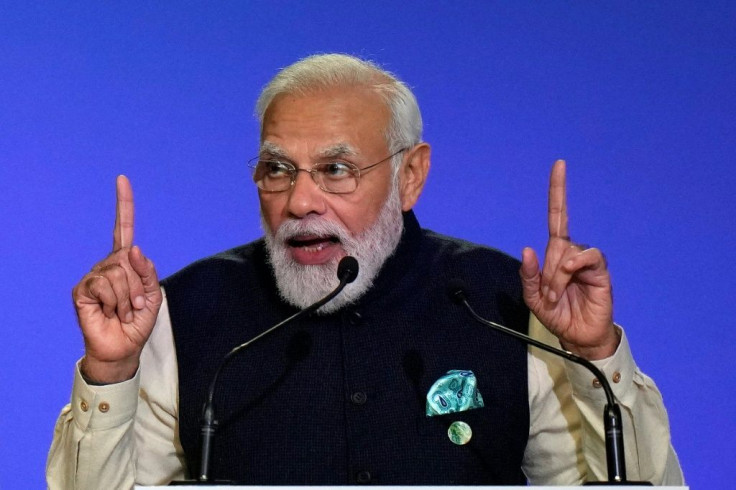Putin, Xi Woo Modi As US tightens Grip On Russia And China

Will President Xi Jinping of China, facing a diplomatic boycott of the Beijing Winter Olympics, and President Vladimir Putin of Russia, facing sanctions if Russia attacks Ukraine, and Narendra Modi of India, a speaker at the US-led Summit for Democracy last week, meet in the near future?
Prime Minister Modi could meet Xi Jinping along with Putin in the "near future," a Kremlin official has suggested.
"The topic of cooperation in the Russia-India-China (RIC) format was addressed," a Russian government spokesperson said, summarizing the videoconference meeting between Putin and Xi Dec 16.
The three leaders last met in the RIC format in June 2019 on the sidelines of the G20 summit in Osaka in Japan. However, tension between India and China along the Line of Actual Control (LAC) in the Himalayas increased since early 2020 and so also the US military built-up in the Indo-Pacific sea with the QUAD grouping.
Putin visited New Delhi and had a one-on-one meeting with Modi Dec. 6 and 10 days later he held a video conference with Xi.
Both Putin and Xi "agreed to continue exchanging opinions in this regard and to endeavour to hold the next summit within the RIC framework in the near future," the Russian spokesman said.
"Putin informed Xi about the visit to New Delhi on December 6 in this context," the spokesperson added.
India is yet to acknowledge whether the China factor came up for talks between Putin and Modi in the Dec 6. meeting.
New Delhi, however, remained non-committal on the Russian proposal. Arindam Bagchi, spokesperson for India's foreign ministry, declined to confirm any new development on the RIC format to hold a trilateral summit.
Almost 12 years after the first trilateral meeting, Russia, China and India held the second RIC summit in December 2018 on the sideline of the G-20 meeting in Buenos Aires. The summit, however, did not take place in 2020 and 2021.
The foreign ministers of three nations met Nov. 26 ahead of Putin's India visit. A major difference was visible on the Indo-Pacific where Russia supported the Chinese concern on the QUAD grouping in which India is a member along with Japan, Australia and the U.S. in the Quadrilateral Security Dialogue.
India has "enhanced military and technical cooperation with Russia to meet the security challenges, particularly the aggression by China along the LAC in eastern Ladakh, bordering Pakistan.
The Indo-Pak standoff reached a flashpoint on June 15, 2020, when 20 Indian soldiers and at least four personnel were killed in a violent clash at Galwan Valley in eastern Ladakh. Russia which does not have any military alliance with China stepped in to defuse tensions following the Galwan standoff.
On Dec. 9, US President Joe Biden had invited more than 100 nations, including India, for the Summit of Democracy, which was addressed by Modi.
Despite being a close US ally since 2016, India has shown eagerness to be part of the pan geographic trilateral that goes beyond regionalism due to its unique convergence of geography and economics -- occupying nearly 19 percent of the global landmass, over 33 percent of the global GDP.
In place of a unipolar world spearheaded by the US, these nations advocate a multipolar world order and the RIC format has provided India with an opportunity to place the country at a neutral stance and pursue its national interests without the nod from the U.S.
However, the Russian and Chinese objective of countering Washington with India's strategic partnership may force India to rethink its stance on the trilateral pact. For Russia and China, India's participation in the Indo-Pacific QUAD grouping against China is the eternal cause of worry.
Russia and China, who were excluded from Biden's elite democracy conclave, proved that they have each other on Dec. 16. Now they are trying to woo India which at times acts independent of Washington.





